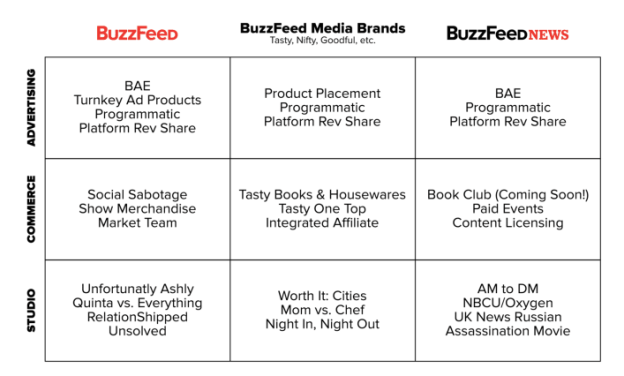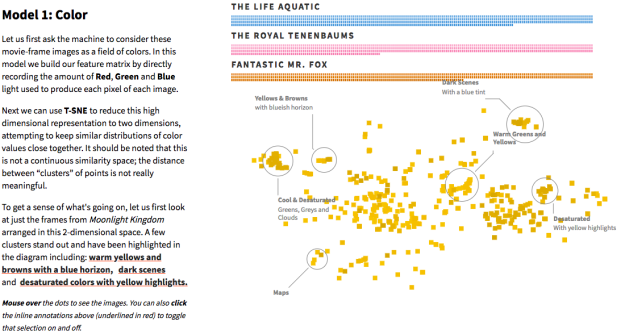
Because he sends me an email every December, Nic Newmanhas a tag all of his own on this blog. So as this year’s email lands in my inbox here’s my annual reply around what I’ve noticed in the last 12 months — along with some inevitably doomed predictions of what might happen in the next year…
Surprising in 2017: horizontal storytelling and Facebook disappointments
The rapid spread of horizontal storytelling (‘tap to advance’) struck me particularly this year. 2017 saw it become the default for new launches, from Facebook’s new ‘Messenger Day‘ feature and Medium’s Series, to Instagram‘s Carousel feature and WhatsApp‘s Status feature, while the BBC news app’s videos of the day feature used the same approach too.
Visual storytelling has continued to become important, particularly in audio this year: some of radio’s biggest hits are now on video. The mobile podcasting app Anchor’s text-to-video tool was a particularly impressive example. Beyond audio, the use of gifs (or gif-like looping video) within articles, and the use of emojis in notifications (and email subject lines) are two other signs of an increasing need for journalists to have visual literacy.
Another practice increasing in 2017 was regional data and investigative journalism. This is perhaps no surprise — the Bureau Local project and the BBC shared data unit were announced in 2016, but it was striking at Data Journalism UK to see how much emphasis regional publishers are putting on investigations now, as well as the impact of Google’s DNI funding on the sector.
In a year with so much bad news, it has been heartening to see a continuing focus on diversity in the industry. How this translates into action remains to be seen, but accepting you have a problem is the first step. (On that note, my colleagues Diane Kemp and Bob Calver published a free ebook on making reporting more inclusive.)
And when it comes to a lack of action, Facebook spent the year disappointing observers on a regular basis, from the safety for journalists initiative which failed to address the elephant in the room, to criticisms of their refusal to share data on their fake news initiative, to their failure to look beyond 73 pence of Russian spending on EU referendum advertising.
Surprising us in 2018? The flight from Facebook to Apple News and chat
As it continues to miss opportunities to prove it can combine great power with responsibility, Facebook moves ever closer to being subject to more regulation than it is used to.
Meanwhile, I think a combination of factors will see publishers start to move away from Facebook: traffic trends swinging back towards search; a decline in performance generally; its decision to stop paying publishers for video; and BuzzFeed CEO Jonah Peretti’s critical position in relation to the platform being just some (see below).
[UPDATE: A month after I wrote this, Frederic Filloux published Facebook is done with quality journalism. Deal with it. The backlash has come quickly]
If those publishers go anywhere, it may well be Apple News. That platform — which appointed New York Magazine’s Lauren Kern its editor in chief in 2017 — has enjoyed ‘dark horse’ status throughout 2017, growing fast, and it could well peak in 2018 at Facebook’s expense if it addresses issues around metrics and monetisation.
Chat platforms might also experience a boom in interest in 2018 for a similar reason, including those with a bigger footprint in Asia, like WeChat and Line. And the raft of features introduced by Instagram could see it enjoying a boom of journalistic experimentation.

BuzzFeed’s business model highlights a number of revenue streams outside of advertising (source)
The impact of Peretti’s memo — not quite an abandonment of its distributed content strategy, but certainly a shift in focus away from the advertising that underpins it — should not be underestimated. Expect revenue streams like events and merchandise to enjoy a resurgence of interest and experimentation.
The pace has been slower than expected this year in the field — the BBC’s Alexa skill has only just come out of beta testing, and 2017 saw some quiet work on the platform — but I’m hoping that 2018 should see more results of experimentation with voice-driven interfaces for news, with Apple’s delayed HomePod and the Amazon Echo Show adding more opportunities, and publishers getting to grips with the technologies underpinning it.

Machine learning used by Yannick Assogba as a form of film criticism
One of those technologies is machine learning, which I think we’ll see increasingly used in a number of areas, including data journalism.
Machine learning algorithms are particularly useful in finding needles in haystacks and identifying patterns. But perhaps more likely is the use of those technologies to facilitate augmented journalism where automated technology plays some sort of supporting role. Of course all journalism is already augmented by technology — from pen and paper to dashboards like Twitterdeck and Dataminr — but I’m expecting us to see a data-driven wave of new ‘augmentations’.
Finally, I think 2018 will see an increased emphasis on trust as a key metric. Not just in advertising, but in search and social algorithms too. This will lead to a renewed emphasis on transparency, which has perhaps moved backwards in recent years as the impact of blogging and the open data movement has been diluted by newsrooms’ traditional protectionism.
Predictions that are doomed to come 5 years too late or never at all
Now for the predictions…
My doomed prediction number 1 is that meme journalism will become a thing. Just because.
Doomed prediction number 2 is that AI will be implicated in a piece of fake news or a hoax. I’m thinking here of a video or image generate by AI. This is most likely years away yet, but I’ll say it anyway.
Doomed prediction number 3: news organisations will rediscover the opportunities of AR (augmented reality) as a side effect of ongoing experimentation with VR.
And a final doomed prediction: a news organisations will be implicated in a trolling/bots/sockpuppetry scandal. It’s already been revealed that news organisations quoted known Russian trolls in stories, but there’s more where that came from.
If you’re interested in previous years’ reviews and predictions you can find 2016’s post here, 2015’s post here, and 2014’s post here. Nic Newman’s 2017 report is available here.

Pingback: L’avenir du journalisme – revue de presse du 22 décembre 2017 - Cladelcroix
Nice article, Keep up the good work!
Wishing you great success in achieving your dreams and goals in this new year!
– Cheers
Reblogged this on Matthews' Blog.
Pingback: FYI January 24, 2018 – Instagatrix
Pingback: Journalism, Media, and Technology Trends and Predictions 2018 – Technology News BD